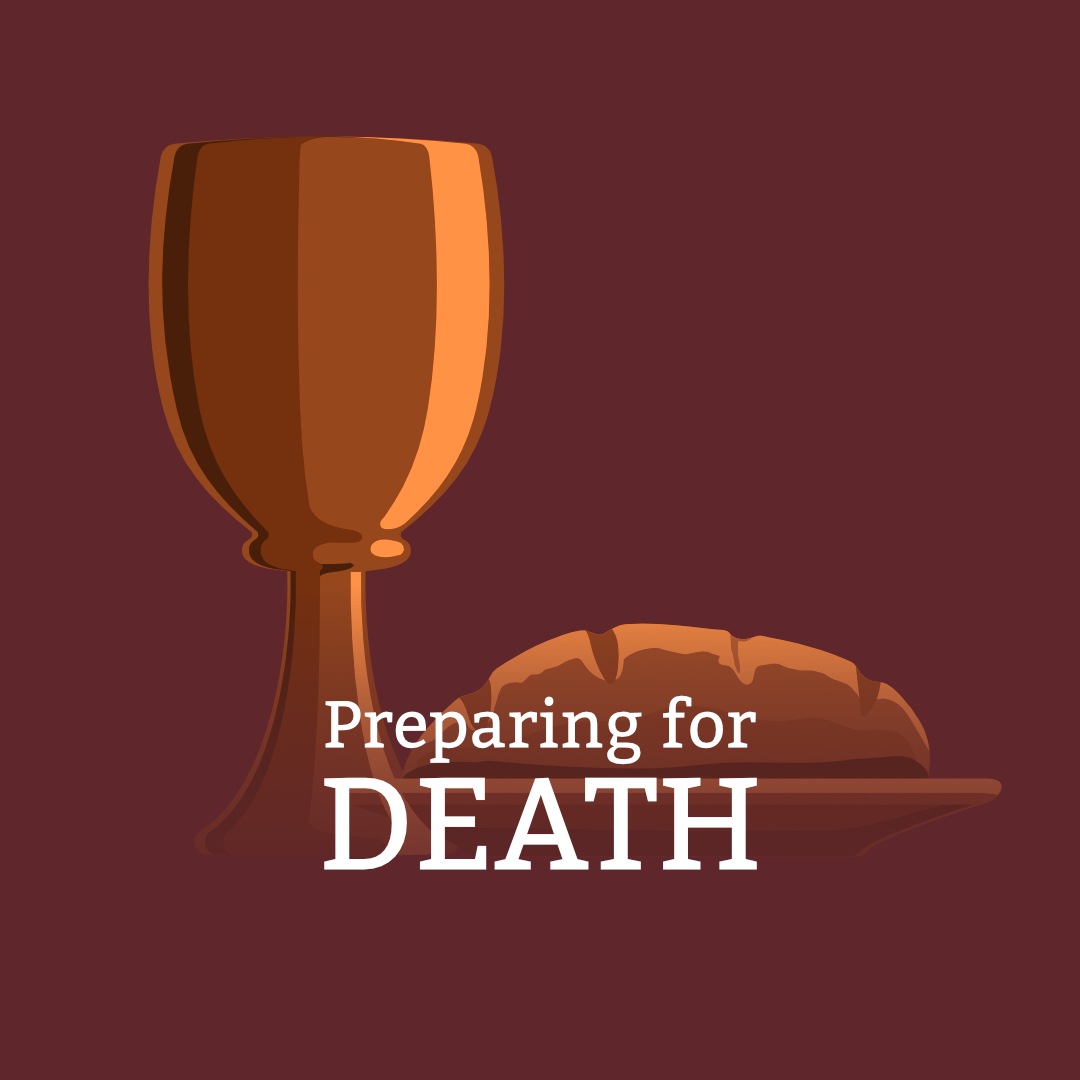Journey to the Cross: An Easter Study From Mark’s Gospelনমুনা


Preparing for Death (Mark 14:1-26)
"While they were eating, Jesus took bread, and when he had given thanks, he broke it and gave it to his disciples, saying, “Take it; this is my body.”
Then he took a cup, and when he had given thanks, he gave it to them, and they all drank from it. “This is my blood of the covenant, which is poured out for many,” he said to them." Mark 14:22-24 (NIV)
Context
In today’s reading, Jesus institutes the sacrament Christians call communion, the Eucharist, or the Lord’s Supper.
The background of this practice is rooted in the Jewish Passover, the feast that initiated the 7-day Festival of Unleavened Bread (see Leviticus 23:4-8).
Passover commemorated a defining moment in Israel’s history. The people were slaves in Egypt, but God heard their cry for deliverance (Exodus 2:23-25). In response, he “passed over the houses of the Israelites…when he struck down the Egyptians” because of the lamb’s blood marked on their doorposts (Exodus 12:23). The blood symbolized God’s provision of atonement for the sins of the people inside the house (Leviticus 17:11).
Additionally, to interpret today’s reading, it may be helpful to know some background about the making of ancient covenants:
- Broken body - in an ancient covenant, the bodies of certain animals were cut in two and laid out for one party to walk through in an act of self-identification. It was a way of solemnly swearing, “May what has happened to these slaughtered animals happen to me if I fail to keep this covenant” (see Genesis 15:9-20 and Jeremiah 34:17-20).
- Blood -was also an important component of covenant-making ceremonies. It symbolized the covenant as a solemn and binding agreement. At Sinai, the Israelites were sprinkled with blood as they officially accepted the terms of God’s covenant (Exodus 24:8).
Observation
Highlight the theme of “preparation” as it appears in today’s reading. We observed this theme when:
- The religious leaders prepare to have Jesus arrested (Mark 14:1-2)
- The woman prepares Jesus’ body for burial (Mark 14:8)
- Judas prepares to betray Jesus (Mark 14:10-11)
- The disciples prepare to celebrate the Passover with Jesus (Mark 14:12-16)
- Jesus prepares the disciples for Judas’ betrayal (Mark 14:17-21)
- Jesus prepares the disciples for the new covenant by re-centering the Passover meal around his upcoming sacrifice (Mark 14:22-25)
Interpretation
As you read today’s passage in Mark, take some time to close your eyes and put yourself in the shoes of different members of the original audience:
- Imagine what the woman felt when she heard Jesus say that her extravagant act would be reported wherever the gospel about him was proclaimed.
- Imagine what Judas felt in these final days after he had made the deal with the chief priests to betray Jesus but continued to pose as a committed disciple.
- Imagine the many questions the other disciples might have as they experienced these events.
- Imagine what was happening inside of Jesus as he made these preparations, knowing the great trial ahead and that all his disciples would desert him.
Finally, reflect on the background of the Exodus, the Passover, and covenant-making ceremonies. How does this historical context contribute to a greater understanding of the significance of communion? Here are some ways we discovered:
- In Jesus, God has rescued us from slavery to the real enemy: sin and Satan.
- Jesus identifies his body and blood as the offering which provides atonement for our sins.
- Jesus’ sacrifice initiated a new covenant and set aside many of the rituals required under the old covenant (see Hebrews 10:1-18).
Application
The making of the new covenant came at a great cost, which Jesus paid on our behalf.
As you prepare for Easter, consider the magnitude of what he has done, and the next time you take communion:
- Remember the broken bodies of the animals in ancient covenant ceremonies, representing the curse deserved for those who break covenant. Jesus willingly took this curse.
- Remember the blood of the animals, painted on doorposts and sprinkled on people, representing the atonement that was provided. Jesus willingly provided this atonement.
ধর্মগ্রন্থ
About this Plan

This plan will guide you through an inductive study of Jesus’ journey to the cross, beginning with the triumphal entry into Jerusalem. Grab a notebook to jot down your thoughts as you are led through a process of (1) observing the events of Passion Week, (2) interpreting the original message to the church in Rome, and (3) applying the Easter story’s timeless truths to your life today.
More
সম্পর্কিত পরিকল্পনাসমূহ

Journey Through 1 & 2 Peter and Jude

Living by Faith: 5 Lessons From the Book of Habakkuk a 5-Day Devotional by Dwan Dixon

Unmuted: Find Your Voice. Walk in Your Assignment.

Unboxed: Anchored

Grace to Start Over

Philippians: Joy in Christ

Born Again Man: 3 Day Bible Plan on Becoming the Man God Had in Mind

Journey Through Revelation

Listening to God's Voice
